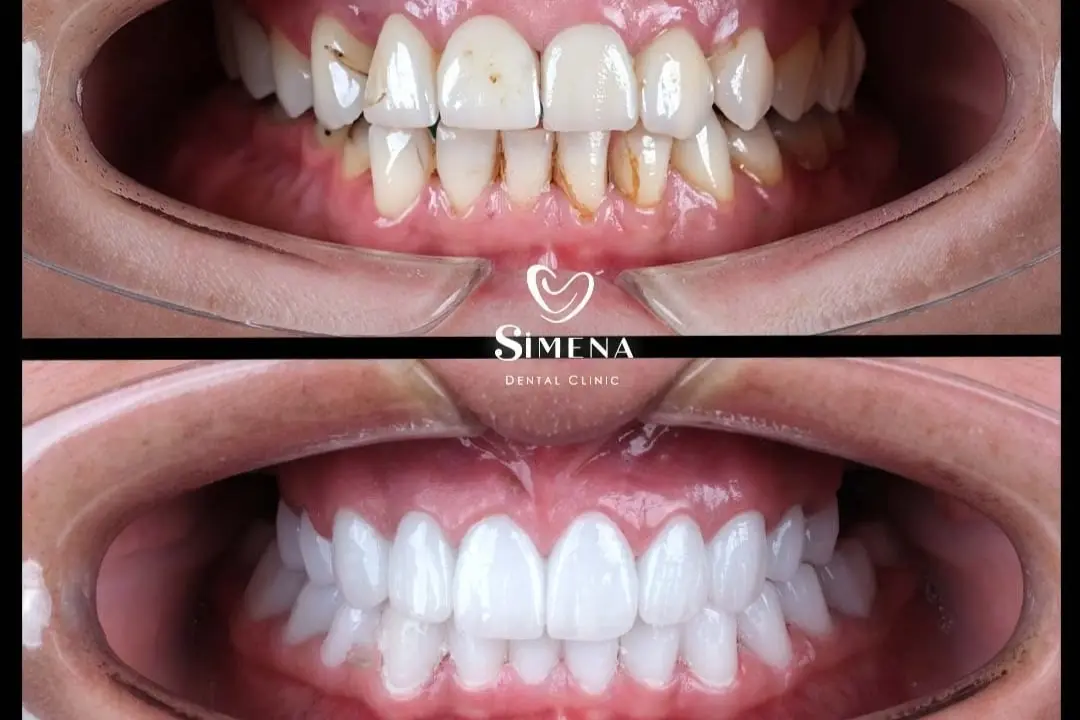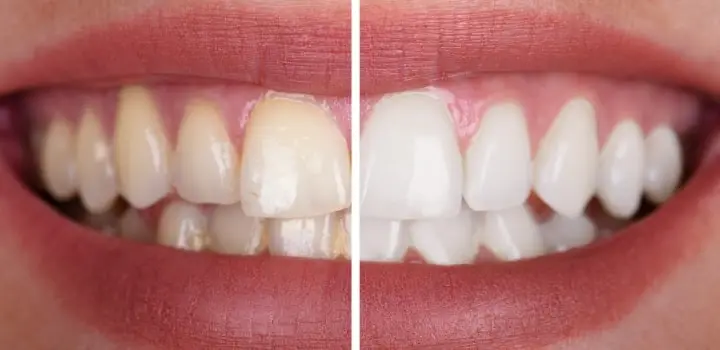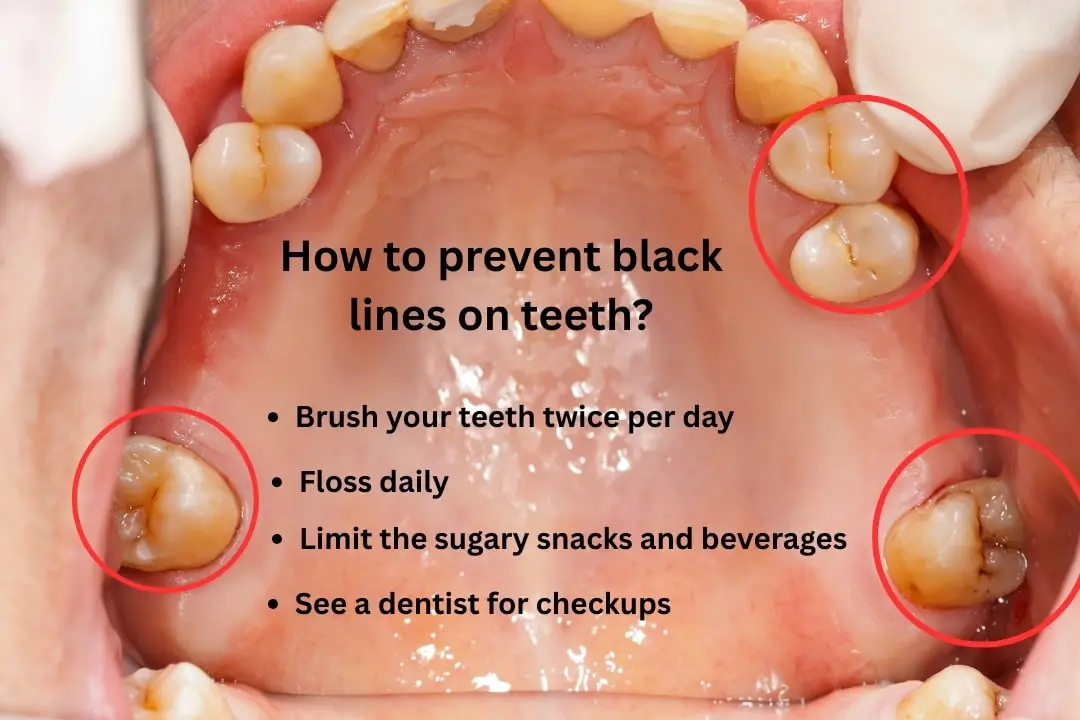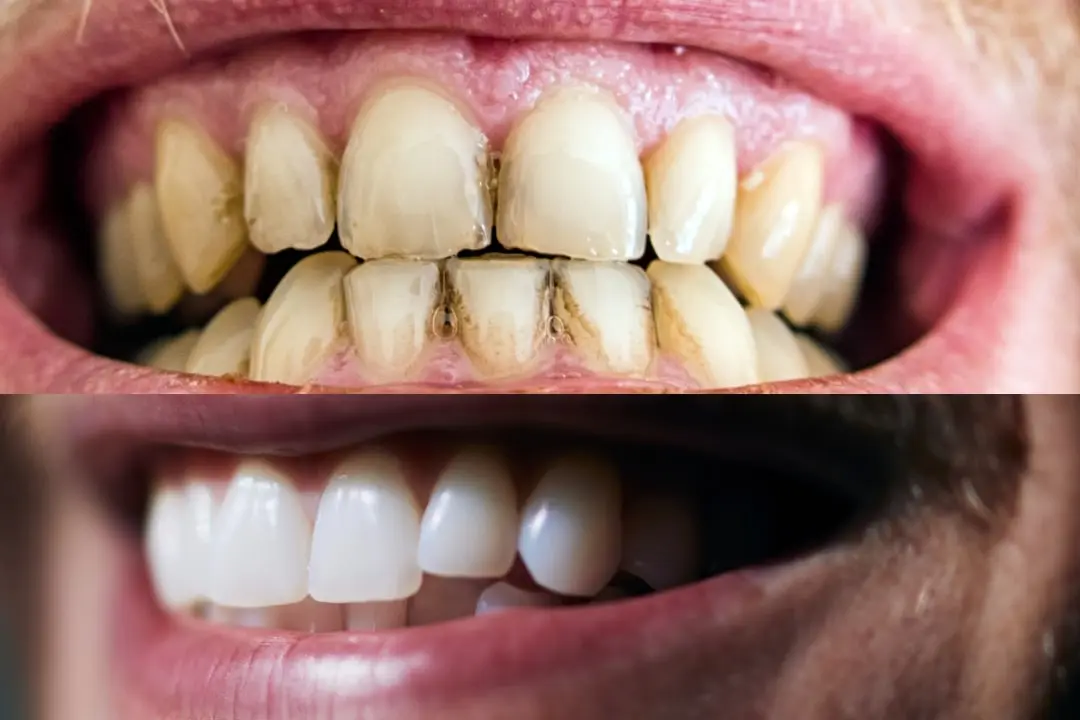Thin, dark-coloured lines on the tooth surface usually appear around the gum line or in the natural grooves of the teeth. These black lines may be more prominent when smiling, especially on the front teeth, but they can also appear on other teeth. The lines may be continuous or intermittent and may appear in different ways between the teeth, around the teeth or at the gum line.

The main causes of this condition may include calculus, black tartar formation, pigmentation in the gums or stains on the tooth surface. It is very important to consult a dentist and perform regular oral care for correct diagnosis and effective treatment.
Now that we have briefly touched on what black lines on teeth are, let's look at the causes of black spots and discoloration on teeth and treatment options.
What is tooth discoloration?
Tooth discoloration is when your teeth change color. Your teeth may turn yellow, brown, grey, or even darken over time. This change can happen on the surface or inside the tooth.

Sometimes it's just stains from tea, coffee, or smoking. Other times, it's deeper like damage from an injury, ageing, or certain medications. Can brushing fix all stains? Not always. If the stain is inside, you'll need more than toothpaste.
What causes dark black stripes on teeth?
| Cause | Description |
| Plaque and tartar buildup | Hardened surface stains |
| Smoking or tobacco use | Deep chemical discoloration |
| Iron supplements | Reaction with enamel |
| Certain mouthwashes | Chlorhexidine staining |
| Poor oral hygiene | Bacterial pigment deposits |
| Tooth decay | Internal structure damage |
| Excess fluoride (fluorosis) | Patchy brown-black marks |
| Trauma to the tooth | Dying nerve turns tooth dark |
Tooth discoloration is when your teeth lose their natural brightness and take on shades like yellow, brown, grey, or even bluish tones. It's not just a color issue, it's often a sign of what your teeth have been through.
Think of your teeth like white ceramic mugs. If you consume more coffee, tea, or other colored things, and stains build up on your teeth. Smoking, poor brushing or certain foods make easy discoloration. Sometimes the change comes from inside like after an injury, nerve damage, or taking antibiotics as a kid. Brushing won't touch it and whiten teeth.
Also, as we age, enamel gets thinner. That makes the darker layer underneath dentin show more. So even if you've been brushing well, your teeth might still look darker over time.
To fix the color, you need to know the cause.
Do black stripes on teeth mean decay?
No, not always. But they can be a warning sign. Some black stripes are just surface stains from coffee, tea, or even certain mouthwashes. They look scary but come off with a good cleaning. Others go deeper, and that's where things get serious.
Think of it like a banana. A dark mark on the skin doesn't always mean it's rotten inside. But if it sinks in? That's decay. Same with teeth. If the stripe feels sticky, rough, or keeps getting darker that could be early tooth decay or even a cavity forming underneath.
Sometimes, black lines hide in the gumline or between teeth. They build up slowly and go unnoticed until they start causing damage. So, the key is simple: don't guess and let a dentist check. Catching it early means saving the tooth before it becomes a painful problem.
What causes a black stripes on a human gum near a tooth?
A black stripe on the gum near a tooth usually comes from one of three things: metal from old fillings or crowns, trapped plaque or tartar, or a pigmented gum line. Sometimes it's harmless, like natural melanin in darker gums. Other times, it's a sign of poor hygiene or gum disease.
Is it always dangerous? No. But if it grows, bleeds, or feels sore get it checked.
How to prevent a tooth from turning black?
The best way to stop a tooth from turning black is to treat it well like something valuable you want to last a lifetime. It all starts with daily habits. Brush twice a day, and don't rush it. Use a soft-bristled brush and fluoride toothpaste. Clean between your teeth too floss or use interdental brushes. Plaque loves to hide where your brush can't reach.

Avoid smoking and go easy on things like coffee, tea, red wine, and dark-coloured sodas. These don't just stain your teeth over time, they build up and darken the surface.
If there's trauma, decay, or an untreated cavity, even a clean-looking tooth can darken from the inside.
Also, keep an eye on old fillings or crowns. Some metals can leave dark lines at the gumline over time. And don't ignore small changes a little dark spot today can become a big problem later.
The golden rule? Visit your dentist regularly. They catch early signs before you even feel them. Prevention always costs less and hurts less than treatment.
How to remove black stripes on dental crowns?

- Let your dentist do a professional teeth whitening first.
- Special polishing tools can gently remove surface stains.
- If stains are deeper, air polishing may help.
- Ultrasonic cleaning can break down tough tartar.
- Avoid charcoal or abrasive toothpaste they can scratch the crown.
- Try low-abrasion whitening toothpaste made for restorations.
- If the metal edge of the crown is showing, it might be time to replace it.
- Ask your dentist if internal staining is causing the problem.
- In some cases, laser cleaning can be used on porcelain surfaces.
- Zirconia crown or full-ceramic crowns may be better replacements if staining keeps coming back.
- Most importantly, keep up with brushing and regular check-ups to prevent it from returning.
Why choose Simena Dental Clinic in Antalya?
Simena Dental Clinic in Turkey, located in Antalya's Konyaaltı district, offers a blend of advanced dental technology and personalized care. Our experienced team, led by Oral and Maxillofacial Surgeon Dr. Sevgi Ozan and Aesthetic Dt. Hatice Öztürk, provides a range of treatments including dental implants, veneers, crowns, and smile makeovers. We emphasize patient comfort and utilizes modern equipment to ensure effective and gentle treatments. Contact us for detailed info about your golden smile request.
